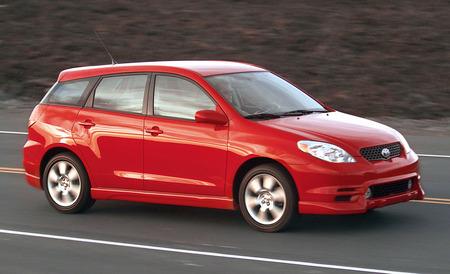The Pontiac Vibe and the forthcoming Toyota Matrix share Toyota’s next-generation Corolla chassis, a world citizen that will be used in replacing North America’s aging Corolla sedan and the newer Corolla variants now sold in Europe and Asia.
Toyota had been pondering a revamp of the milquetoast Corolla when GM approached the automaker about jointly producing a unique, edgy variant for the U.S. market within the same cooperative framework that generates the current Toyota Corolla/Chevrolet Prizm.
The Matrix is a North America-only Corolla offshoot that represents the first tangible outcome of big changes planned for Toyota’s 35-year-old Corolla nameplate, changes intended to freshen its image among the next generation of car buyers. Expect to see America’s next Corolla make its debut at the Detroit auto show in January.
“The Corolla’s brand [image] is a big issue for us,” says Takeshi Yoshida, Toyota’s chief engineer for the Corolla and resident small-car czar. The current four-door vanilla Corolla “is not a vehicle that conceptually is going to appeal to a younger buyer base.”
What will wow the urban MP3-toting Internet junkies of the future? Yoshida isn’t making any bankable predictions, but he admires the way European small cars, such as the Volkswagen Golf and Audi A3, cram performance, style, and utility into the same petite package.
Call it wild speculation, but Toyota’s succeeding generation of small cars seems likely to try to emulate the Continent’s legions of stylish lunch boxes, and the Vibe/Matrix may just be the pathfinder.
At first, the development of the Matrix’s core powertrain and chassis design proceeded jointly with the Vibe. After freezing the final design concept, Toyota polished off the platform’s development in 31 months, according to Yoshida, a three-month improvement over that of the outgoing Corolla. GM engineers were invited to the design party much earlier than with the old Chevy Prizm, which gave them more input into the process, Yoshida says.
GM’s representatives “presented concepts. We tried to listen and make it possible,” says Yoshida. When it came time to fix the styling and individual brand features, Yoshida split the programs to give GM freedom to develop its own sheetmetal. “It was a challenge to create two distinct vehicles,” he says.


Leave a Reply